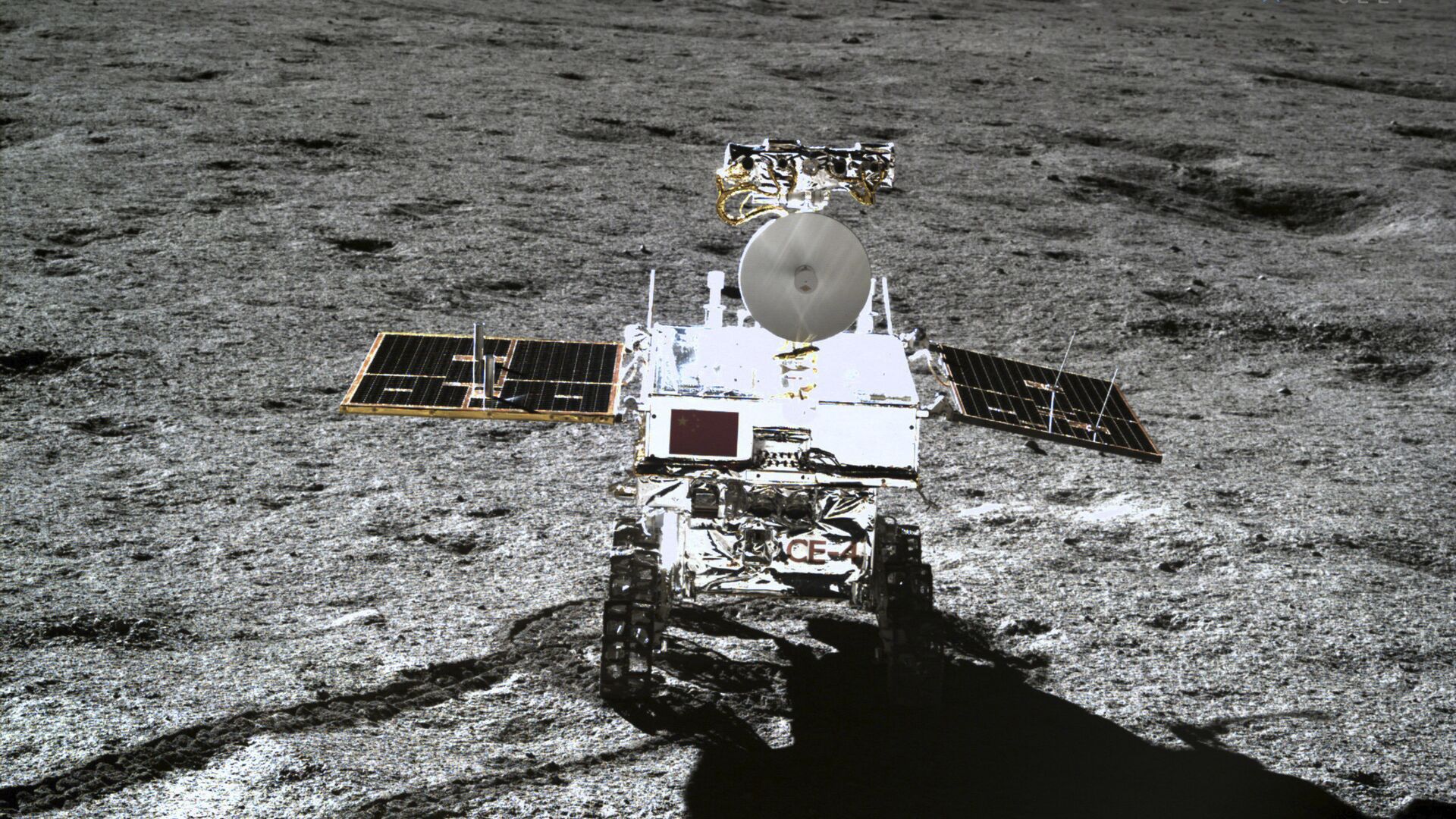Chinese Yutu-2 Rover to Study Mysterious Cube-Shaped Object on Moon, Report Says
13:29 GMT 04.12.2021 (Updated: 17:11 GMT 20.06.2023)

© AP Photo / China National Space Administration/Xinhua News Agency
Subscribe
In January 2019, China became the first nation to land a rover on the far side of the Moon. Over the past three years, the space exploration vehicle has conducted more than a dozen tests and made several exciting discoveries.
China's Yutu-2 rover will study a mysterious cube-shaped object that it previously discovered on the Moon, Andrew Jones, a journalist, who has been covering Beijing’s space programme for several years, wrote on his social media. On 3 December, he posted pictures captured by the rover in the Von Kármán crater on the far side of the Moon. One of them shows a bizarre object that Chinese astronomers have dubbed a "mystery house".
The journalist jokingly wrote that the object is not the black monolith seen in Stanley Kubrick’s iconic film "2001: A Space Odyssey" or the work of aliens. The rover will get closer to the mysterious object in order to study it, Mr Jones wrote.
Ah. We have an update from Yutu-2 on the lunar far side, including an image of a cubic shape on the northern horizon ~80m away from the rover in Von Kármán crater. Referred to as "神秘小屋" ("mystery house"), the next 2-3 lunar days will be spent getting closer to check it out. pic.twitter.com/LWPZoWN05I
— Andrew Jones (@AJ_FI) December 3, 2021
So yeah, it's not an obelisk or aliens, but certainly something to check out, and hard to discern much from the image. But large boulders (right) are sometimes excavated by impacts, as seen by the Chang'e-3 mission, which launched 8 years ago on Dec 1. [CNSA/CLEP] pic.twitter.com/ifOIFr4oQI
— Andrew Jones (@AJ_FI) December 3, 2021
This is not the first time that the lunar rover has made enigmatic discoveries. In February 2019, a month after it landed on the Moon, Yutu-2 has stumbled upon a mysterious gel-like substance, which Chinese astronomers suspect appeared as a result of the impact of meteorites on the lunar surface.
The Yutu-2 rover and Chang'e-4 lander are now into their 37th lunar day of activities. They have already measured the chemical composition of lunar rocks and soils, carried out low-frequency radio astronomical observations using a radio telescope, as well as studied cosmic rays. In addition, the space exploration vehicles will study the evolution of coronal mass ejections between the Sun and the Earth.
The Yutu-2 rover and Chang'e-4 lander are now into their 37th lunar day of activities. They have already measured the chemical composition of lunar rocks and soils, carried out low-frequency radio astronomical observations using a radio telescope, as well as studied cosmic rays. In addition, the space exploration vehicles will study the evolution of coronal mass ejections between the Sun and the Earth.
